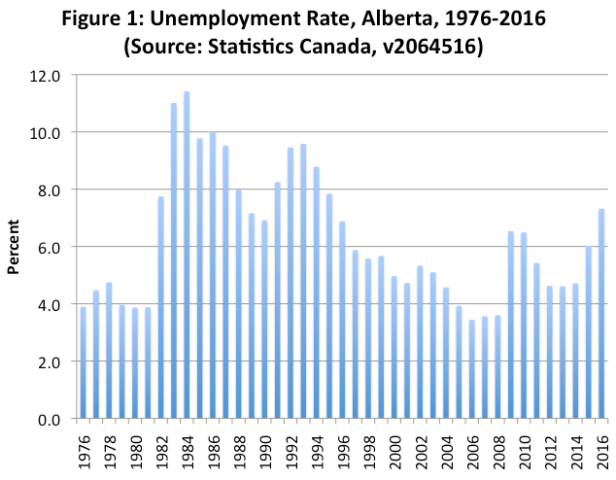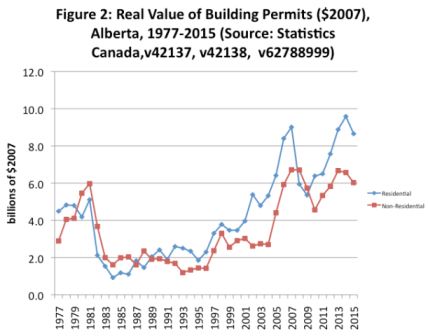The Alberta government’s response to the downturn is the real cause for alarm
In the wake of the resource-sector downturn, Alberta’s economy has been taking a beating and we’ve been inundated by headlines as to how bad things are. Among the recent items: unemployment is up, consumer debt is up, GDP is shrinking and manufacturing sales have dropped 15 per cent as a result of the economic downturn. Another story asks if Alberta has moved from recession to depression?
Indeed, a recent analysis has argued that this downturn is not like the others and that Albertans should fear for the future given the coming shift away from oil consumption. These dire projections are a factor in driving provincial government fiscal policy with large deficits and more debt in an effort to drive stimulus.
Yet, this analysis is flawed as the long-term evidence suggests that despite the hype this downturn has yet to acquire the proportions of past crashes—most notably that of the 1980s. For example, while GDP in Alberta contracted four per cent in 2015, it shrank by even more—5.3 per cent—in 2009. The chart below plots Alberta’s unemployment rate from 1976 to the present. While unemployment has risen since 2014 and currently exceeds that of the 2009-10 downturn, it is below that of the early 1990s and well below the peak of just over 11 per cent reached in 1984.

On the investment front, the second chart below plots the value (in 2007 constant dollars) of residential and non-residential building permits since the 1970s. While there is a decline in both series, it’s not yet anything like either 2009 or the early 1980s. Since 2013, the real value of non-residential building permits (industrial, commercial and institutional) has dropped nearly 10 per cent. Compare this to a 32 per cent drop between 2008 and 2010 or the 66 per cent drop from 1981 to 1983.

In other words, while Alberta’s economy is going through a rough patch, it’s not the economic apocalypse one hears in popular discussion—yet. However, there is one reason why Albertans should be concerned about their economic future and that is their provincial government’s economic policy response to the downturn.
Alberta’s past economic downturns occurred in a provincial government policy environment that ultimately recognized the importance of good tax policy—a philosophy that can be described as the true Alberta Advantage. Alberta’s government has moved away from this policy environment by moving from a 10 per cent flat rate personal income tax to a progressive tax with steeper rates. Moreover, these changes are being accompanied by a multi-billion dollar carbon levy. As well, there is constant rumbling that a provincial sales tax is being considered to help offset resource revenue declines.
And of course, by ramping up its spending faster than the rate of inflation and population growth, Alberta is expected to run deficits well into the future that will result in a provincial debt of nearly $60 billion by 2019 and rising debt-service costs that will generate further business investment uncertainty with respect to future tax burdens.
Such counterproductive economic policy can only slow Alberta’s economic recovery and help make the dire economic prophecies a reality.
Author:
Subscribe to the Fraser Institute
Get the latest news from the Fraser Institute on the latest research studies, news and events.

